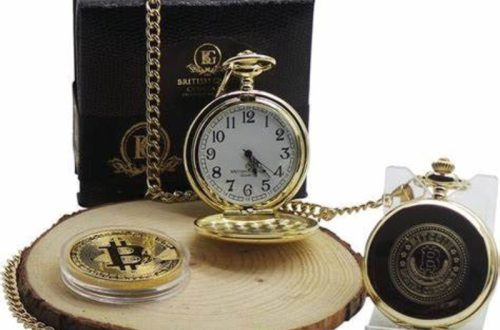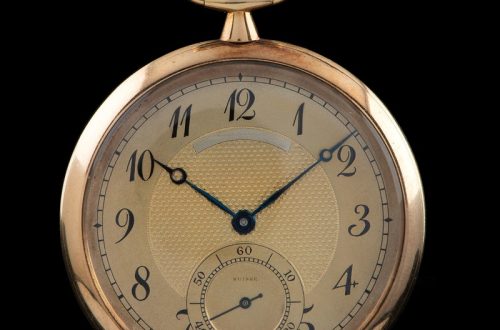In a world dominated by digital displays, mechanical watches stand as captivating testaments to human ingenuity. These timekeeping marvels, powered by meticulously crafted gears and springs, offer a level of sophistication and tradition that transcends their function. But for the uninitiated, the inner workings of a mechanical watch can seem like a complex mystery. This guide unveils the magic behind mechanical watches, breaking down their key components and explaining the fascinating dance they perform to tell time.

Part 1: The Powerhouse: Mainspring and Barrel
1. The Mainspring: A Coiled Power Source
At the heart of every mechanical watch lies the mainspring, a tightly wound steel spring housed within a cylindrical drum called the barrel. This spring acts as the power source, storing potential energy that drives the entire mechanism. As the mainspring unwinds slowly over time, it releases this stored energy in a controlled manner, keeping the watch ticking. The size and tension of the mainspring directly influence the power reserve, which determines how long the watch will run after being fully wound.
2. The Barrel: Keeping the Power Source Secure
The barrel serves as a secure home for the mainspring. It’s a tightly coiled inner wall that keeps the spring in place and allows for a controlled release of its energy. The barrel has a small opening that connects the inner end of the mainspring to the gear train, the system responsible for transmitting the power to the hands of the watch.
Part 2: The Regulating Heart: Escapement and Balance Wheel
1. The Escapement: The Watch’s Governor

The escapement is characterized as the governor of the watch, responsible for regulating the release of energy from the mainspring, and thus ensuring the watch keeps accurate time. This complex mechanism features a continuously moving component known as the escape wheel, which plays a pivotal role. The escape wheel releases a tooth of the gear train at precise intervals. It allows the power from the mainspring to flow in a controlled manner. This controlled release of energy ensures that the hands of the watch move at a steady and consistent pace. It ticks one precise moment at a time. Through its intricate design and precise functionality, the escapement serves as a critical component in the accuracy and reliability of the timepiece. It ensures that the watch maintains precise timekeeping and consistent movement of its hands. It’s a hallmark of quality in mechanical watches.
2. The Balance Wheel: Maintaining Precision
The balance wheel, a small wheel with a hairspring attached, works in conjunction with the escapement to maintain the watch’s accuracy. The hairspring acts like a tiny spring that oscillates back and forth at a specific frequency. This oscillation controls the speed at which the escapement releases energy, ensuring the watch ticks at a consistent rate. Imagine a metronome – the balance wheel acts in a similar way, keeping the rhythm of timekeeping.
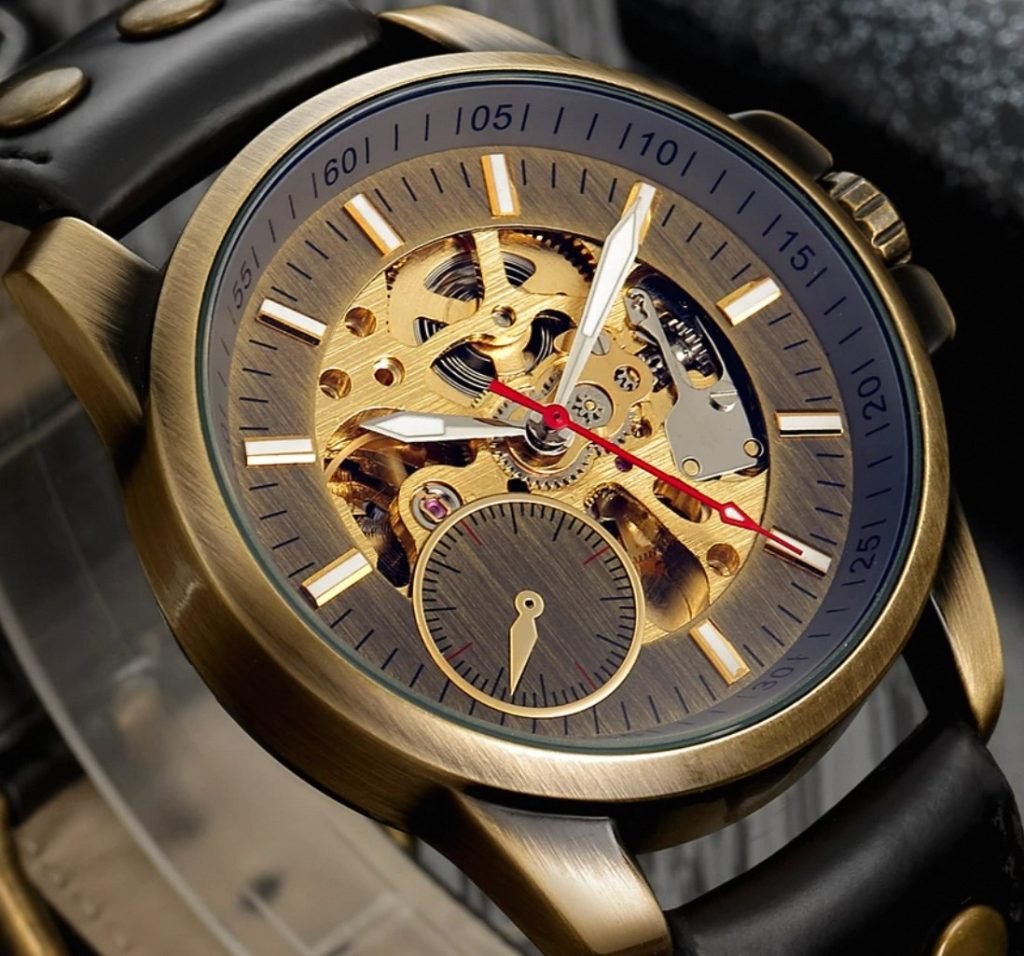
Part 3: Transferring Power: The Gear Train
1. A Network of Interconnected Gears:
The gear train serves as the transmission system of a mechanical watch. It consists of a series of interconnected gears of varying sizes. These play a crucial role in transmitting the power released by the mainspring through the escapement to the hands of the watch. Each gear in the train possesses a specific number of teeth. The size ratio between these gears determines how the rotational speed is multiplied or reduced as it travels through the train. This intricate system of gears effectively regulates the movement of the timepiece. It ensures accurate timekeeping and precise functioning of the watch’s hands. By carefully orchestrating the transfer of power through the train, the watch’s gear train is a fundamental component. It governs the overall performance and reliability of the timepiece.
2. From Mainspring to Hands:
The gear train plays a crucial role in translating the rapid unwinding of the mainspring into the slow and steady movement of the watch hands. The final gear in the train, called the cannon pinion, is directly connected to the minute hand. As the cannon pinion rotates, it drives the minute hand, which in turn carries the hour hand with it through a gear mechanism. This intricate network of gears ensures the smooth and precise movement of the hands on the watch face.
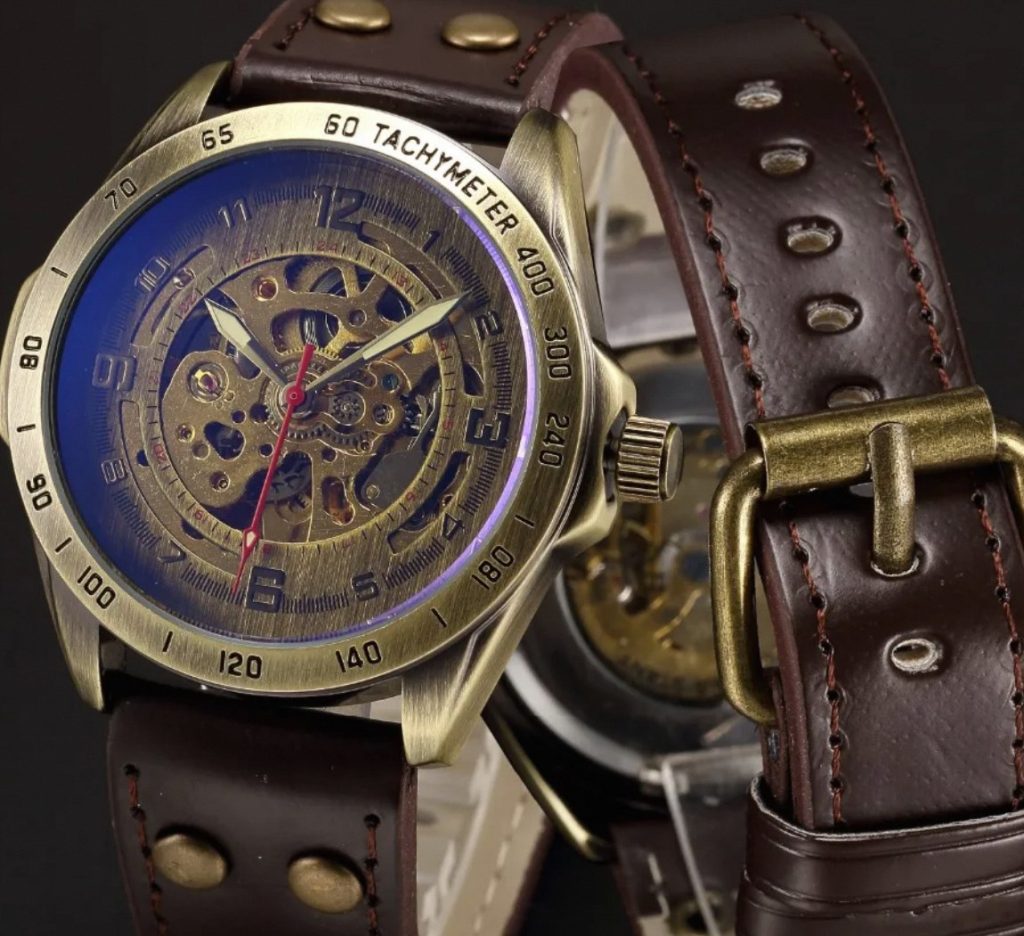
Part 4: Winding and Setting the Time
1. The Crown: A Multifunctional Tool
The crown, a small dial located on the side of the watch case, serves multiple functions that are integral to the timepiece’s operation. By pulling the crown out to its first position, you can adjust the date display on the watch if it includes this feature. This enables you to easily set and maintain the correct date, ensuring the watch remains accurate. When you further pull the crown out to the second position, it stops the movement of the watch. This allows you to precisely set the time to ensure accuracy. This feature is especially important for ensuring that the watch maintains precise timekeeping. It is crucial for various activities and daily scheduling. The versatility of the crown’s functions makes it a crucial component of the watch. It provides the user with the ability to customize and maintain its timekeeping capabilities with ease and precision.
2. Winding the Watch: Replenishing the Power Reserve
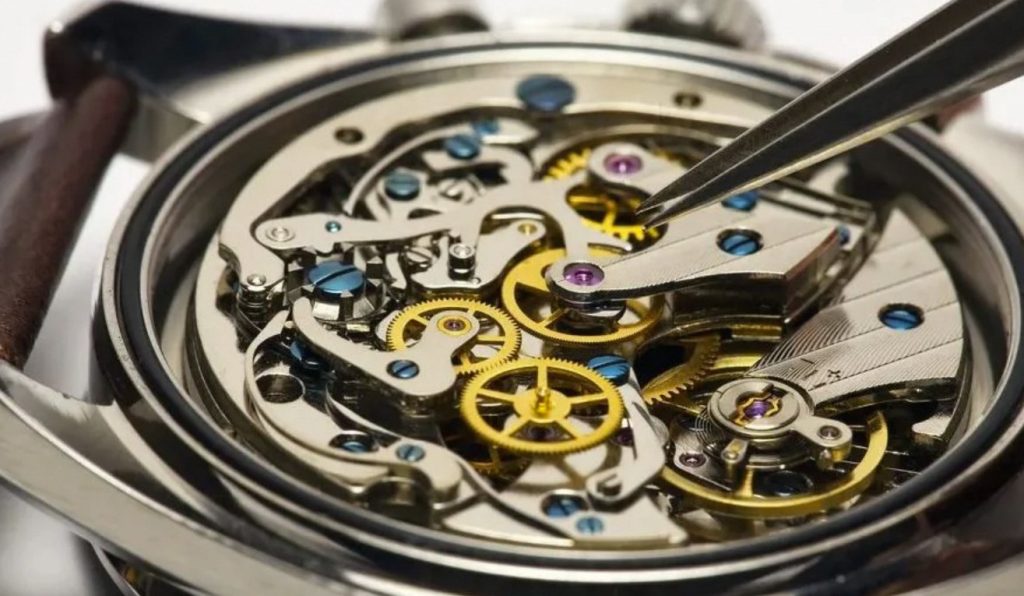
Rotating the crown winds the mainspring, replenishing the power reserve of the watch. As you turn the crown, a series of gears within the movement tighten the mainspring. This stores potential energy that will slowly be released to power the watch. The number of rotations required to fully wind the watch will depend on the specific watch model and its mainspring capacity.
In conclusion, a mechanical watch is a marvel of engineering. Each component plays a vital role in the symphony of timekeeping. From the power stored in the mainspring to the regulated release by the escapement and the steady rotation of the hands by the gear train, every element works in perfect harmony. Owning a mechanical watch is not just about possessing a timepiece. It’s about appreciating the intricate dance of mechanics that transforms a coiled spring into the precise measurement of our days.
